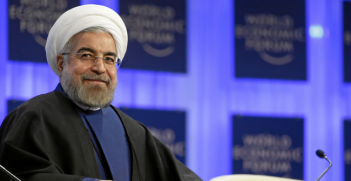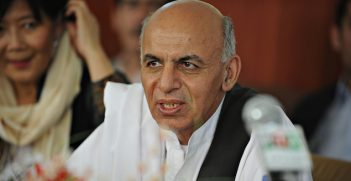Iran at the Crossroads

Professor Amin Saikal’s most recent book, Iran at the Crossroads, is a concise, informative and very readable book. It is strongly recommended for anyone seeking to understand the domestic and international factors that shaped Iran’s transformation from a pro-Western monarchy into an Islamic Republic in 1979; how these subsequently underpinned Iran’s policy behaviour which brought it to its current crossroads; and how they are likely to shape Iran’s internal and external dispositions in the foreseeable future.
The narrative identifies the pathway now being pursued by President Hassan Rouhani, a reformist who was elected in 2013 and who replaced Mahmoud Ahmadinejad, a hardline conservative. Rouhani’s policies seek to relax domestic political and social controls and facilitate economic development that would improve the wellbeing of both the state and its people. They also include cementing Iran’s constructive engagement with regional states, the West generally and the US in particular, and contributing positively to the lessening of tensions in the region, thereby stabilising it.
The book notes the fundamental importance to the above of the signing by Iran and the P5+1 states in July 2015 of the Joint Comprehensive Plan of Action (JCPLOA) or nuclear agreement . Its subsequent implementation on 16 January 2016, which post-dates the book’s publication, is a key milestone in further advancing the reformist leader’s goals.
The early narrative identifies the multitude of factors that ultimately precipitated the 1979 revolution. Factors were both internal and external, were often interrelated, and impacted on political, economic, religious and social issues. They included the drive from within for genuine popular participation in governing the country and the often brutal resistance by the Shahs to this. They also included the strong groundswell of resistance to persistent foreign intervention, initially by Britain and imperial Russia, later by the Soviets and post-WWII, by the US.
The narrative describes the structure and workings of the post-revolution Islamic Republic’s new theocratic pluralistic system of government headed by a supreme leader holding ultimate power, an elected president and a parliament. The latter are subject to clerical oversight to ensure that legislation and even the suitability of parliamentary and presidential candidates comply with Islamic law, principles and values.
Professor Saikal then takes the reader on a 24-year journey to Rouhani’s election in 2013. The first 10 years were a dark period which witnessed locking down (sometimes brutally) of the new system of government, the very bloody eight-year war with Iraq (1980-88), the hostility of the West and especially of the US (which remained outraged over the 444-day embassy hostage crisis), and antagonism with the neighbours, including Israel and the Gulf states.
The legacy of subsequent presidents is then dissected. Although both Hashemi Rafsanjani (1989-1997) and Mohammad Khatami (1997-2005) sought to bring Iran in from the cold and despite Khatami’s efforts to facilitate greater domestic political and social freedom, in practice little was achieved. Their ambitions were frustrated by the conservative opposition and their inability to establish any traction with the West and with the US in particular. As a consequence of public disillusionment with the attempted reform program, hardline conservative Mahmoud Ahmadinejad (2005-2013) succeeded Khatami.
Ahmadinejad’s legacy was costly for Iran. He created significant discord between the two tiers of government, initiated a bloody crackdown on those who protested against the alleged rigging of elections which gave him his second term of office, increased the internal security apparatus of the state and armed forces, beefed up Iran’s nuclear program and support to its Shi’a allies, embarked on a program of confrontation with the US, Israel and other regional states and almost bankrupted the country. Allegations that Iran had commenced upgrading uranium to enable the development of a nuclear weapons capability saw the imposition of crippling economic sanctions by the P5 nations.
Against this background, the very pronounced swing in the 2013 elections away from Ahmadinejad to Rouhani’s reformist policies was understandable. However, as the book points out, the pathway ahead is not all plain sailing. The conservatives remain a formidable group and navigating their opposition to many current policies, both domestic and international, will require considerable skill on Rouhani’s part.
In addition, there remains considerable international distrust of Iran. While President Obama has been cautiously positive, there remains a significant anti-Iranian lobby in the US, which includes a strong pro-Israeli element. The US also maintains separate sanctions because of Iran’s support to designated terrorist organisations. The Sunni Gulf states remain wary. Rouhani’s ability to fulfil his goals is also dependent on him being able to navigate the international currents successfully.
Amin Saikal, Iran at the Crossroads, Polity, 2015.
Ian Dudgeon is a presidential associate of the AIIA. He visited Iran in 2015 for the AIIA and his report from that visit is available on the AIIA website.





